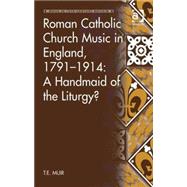
Note: Supplemental materials are not guaranteed with Rental or Used book purchases.
Purchase Benefits
What is included with this book?
| Preface | |
| Introduction: 19th-century English Catholic music: a neglected heritage | |
| Heritage, History and Liturgy: The historical background | |
| The liturgical framework | |
| Catholic Music in the Late 18th and Early 19th Centuries: Plainchant in the late 18th and early 19th centuries | |
| Music at the London embassy chapels and their successors | |
| Ultramontane Influences on Catholic Church Music: Plainchant reinterpreted | |
| The revival of Renaissance polyphony | |
| Music for Extra-Liturgical Services: Catholic vernacular hymnody, c1842-1913 | |
| Music for benediction | |
| The Iron Frame: Catholic Music During the Early 20th Century: The new legislative framework | |
| Plainchant from Solesmes | |
| Renaissance polyphony with an English inflexion: the work of Sir Richard Terry | |
| Conclusion: Catholic church music in the early 20th century: visions of uniformity - diverse reality | |
| Select bibliography | |
| Index | |
| Table of Contents provided by Publisher. All Rights Reserved. |
The New copy of this book will include any supplemental materials advertised. Please check the title of the book to determine if it should include any access cards, study guides, lab manuals, CDs, etc.
The Used, Rental and eBook copies of this book are not guaranteed to include any supplemental materials. Typically, only the book itself is included. This is true even if the title states it includes any access cards, study guides, lab manuals, CDs, etc.